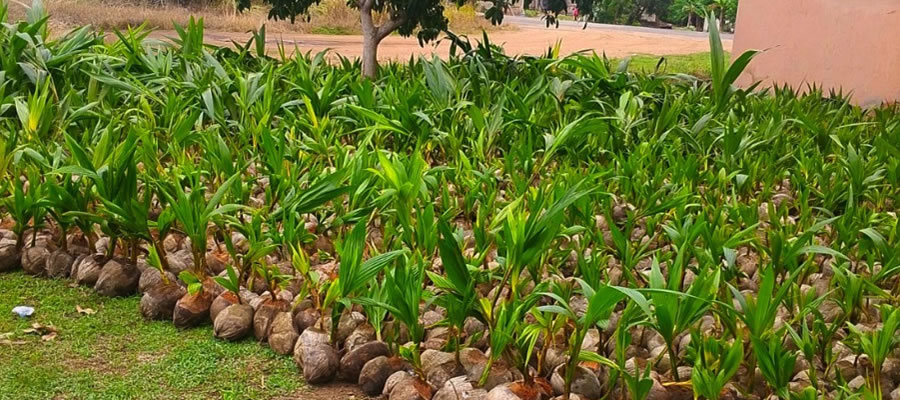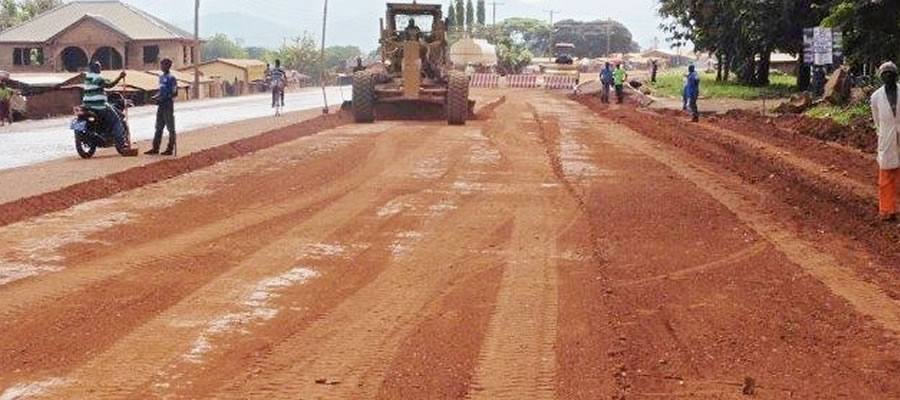

This chapter analyses data on stock of houses, type of dwelling, ownership status, construction materials, room occupancy, access to utilities and household facilities, main source of water for drinking and for other domestic use, bathing and toilet facilities and method of waste disposal in the District.
Access to Utilities and Household Facilities
Main source of lighting
Table 8.8 presents main sources of energy for lighting in the District. The two main sources of lighting for households in dwelling units in the District are electricity (mains) (46.9%), and kerosene lamp (45.1%). Torchlight is used by six percent of households, while the least used sources of lighting are solar energy, candle, gas lamp, and electricity (private generator), fire wood and crop residue.
Main source of cooking fuel, and cooking space used by households
The distribution of cooking spaces and main source of cooking fuel used by households is presented in Table 8.9. The main source of fuel for cooking for most households in the District is wood (81.5%). Charcoal is used by 12.4 percent of households whiles 3.0 percent use gas.
The Table further indicates cooking space used by households. A high proportion of households use separate room for exclusive use of household (34.8%), structure with roof but without walls (27.4%) and open space in compound (19.3%) as cooking space.
Main Source of Water for Drinking and other Domestic use
The availability and accessibility to improved drinking water is an important aspect of the health of household members. Water sources are often classified as ‘improved’ or ‘unimproved’. Sources considered as improved are piped public water into homes, public standpipe, borehole, protected (lined) dug well, protected spring, and rainwater collection; unimproved are unprotected wells and springs, vendors, and tanker-trucks (WHO and UNICEF, 2000).
Table 8.10 presents the sources of water for drinking and other domestic use of households in the District. The table shows that the four main sources of household drinking water are bore-hole/pump/ tube well (29.7%), river/stream (25.1%), dugout/pond/lake/dam/canal (15.9%) and public tap/standpipe (14.0%). Others are pipe-borne outside dwelling (6.5%), rain water (2.0%), and unprotected spring (1.7%).
Table 8.10 further shows that, the main source of water for other domestic use of household is river/stream (29.1%). Some households use bore-hole/pump/tube well (26.3%) and dugout/ pond/lake/dam/canal (16.0%) and public tap/standpipe (13.6%).
27.4 percent use bush/field and 27.3 percent use public toilet (WC, KVIP, Pit, Pan, etc). Households which use KVIP account for 7.8 percent. 60
Toilet and Bathing Facilities
Information on toilet facilities is important for housing as well as public health policy and for planning the location of such facilities in areas they are most needed. Table 8.11 presents the data on toilet and bathing facilities in the district. One in every three households (36.0%) use pit latrine while 27.4 percent use bush/field and 27.3 percent use public toilet (WC, KVIP, Pit, Pan, etc). Households which use KVIP account for 7.8 percent. 60
Table 8.11 shows that 34.9 percent of households have bathroom for exclusive use while 17.6 percent use open space around house for bathing. Other types of bathing facilities used by households include shared separate bathroom in the same house (16.0%), and shared open cubicle (13.6%).
Date Created : 11/17/2017 3:36:24 AM












 facebook
facebook
 twitter
twitter
 Youtube
Youtube
 +233 593 831 280
+233 593 831 280 0800 430 430
0800 430 430 GPS: GE-231-4383
GPS: GE-231-4383 info@ghanadistricts.com
info@ghanadistricts.com Box GP1044, Accra, Ghana
Box GP1044, Accra, Ghana